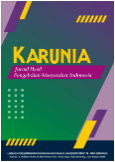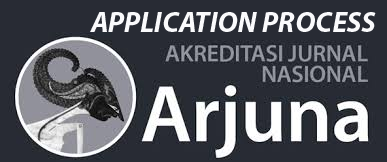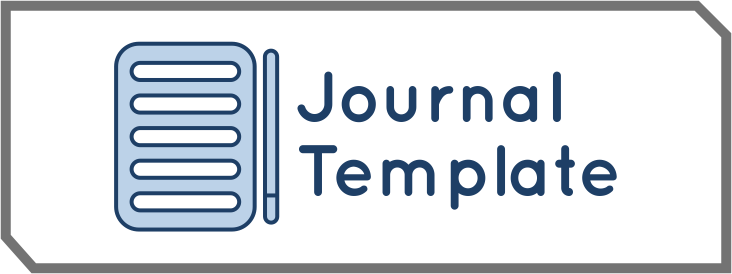Pelatihan Pembuatan Bahan Ajar Kreatif dengan Media Canva Bagi Guru dalam Upaya Meningkatkan Hasil Belajar Siswa MTs Al Abraar
DOI:
https://doi.org/10.58192/karunia.v4i1.3020Keywords:
Canva, Teaching Media, TrainingAbstract
Abstract, In recent years, there have been challenges faced by MTs Al Abraar in an effort to improve student learning outcomes, especially in creating creative and innovative learning. The partners involved in this program are teachers at the Al-Abraar Tandem Hilir Private Middle School, Hamparan Perak District, where the main problem experienced by partners is the lack of knowledge in using IT in creating creative teaching materials. Therefore, the solution offered is to provide training in creating creative teaching materials to improve teachers' knowledge and skills in creating, using and optimizing the use of Canva. The location for implementing this program has been discussed with partners, namely at the Al Abraar Tandem Hilir Private Middle School located at Jln. Listrik Emplasmen Tandam Hilir I, Hamparan Perak District, Deli Serdang Regency, North Sumatra. This program consists of stages of preparation, implementation, monitoring, and evaluation. In implementing this service, the team implemented the in-house training method. In the implementation of the training, the community service team provided tutorial materials on the use of Canva which would be carried out for 2 meetings (2 meetings per material) and carried out alternately with a duration of 120 minutes each. Training activities on this were carried out on August 8-9, 2024 offline with lecture methods, direct training, discussions and questions and answers. The results of this activity can be seen that the participants of the activity can recognize and can create creative teaching material designs using Canva and its supporting features and are used in teaching. The sustainability of this program can be measured by the existence of teaching materials made using Canva.
References
Afriadi, P., Rozi, F., Prawijaya, S., & Ratno, S. (2023). Using The Canva App as A Media Horizontal Thematic Learning (Art, Science and Language) in Elementary School. Proceedings of the 4th International Conference on Science Education in The Industrial Revolution 4.0, ICONSEIR 2022, November 24th, 2022, Medan, Indonesia. Proceedings of the 4th International Conference on Science Education in The Industrial Revolution 4.0, ICONSEIR 2022, November 24th, 2022, Medan, Indonesia, Medan, Indonesia. https://doi.org/10.4108/eai.24-11-2022.2332611
Agustini, S. (2023). Utilization of Canva as a Learning Aid in Informatics for Middle School Students. Engineering and Technology International Journal, 5(03), 264–269. https://doi.org/10.55642/eatij.v5i03.665
Armilah, I., Miswar, D., & Mona Adha, M. (2024). Utilization of CANVA as a Learning Media for Social Studies. International Journal of Educational and Life Sciences, 2(4), 283–291. https://doi.org/10.59890/ijels.v2i4.1691
Baharuddin, & Kanada, R. (2017). Pengembanganprofesionalisme Guru Melalui In-House Training. Journal of Islamic Education Management, 3(2), 1–20.
Bylund, E. (1974). Soziologie der geographischen mobilität. Geoforum, 5(1), 97–98. https://doi.org/10.1016/0016-7185(74)90199-7
Carrier, M. (2017). Introduction to Digital Learning. In M. Carrier, R. M. Damerow, & K. M. Bailey (Eds.), Digital Language Learning and Teaching (1st ed., pp. 1–10). Routledge. https://doi.org/10.4324/9781315523293-1
Dasman. (2016). Peningkatan Kemampuan Guru Dalam Menyusun Kelengkapan Mengajar Melalui In-House Training Di SMPN 4 Pasaman. Jurnal Manajemen Pendidikan, 1(1). https://doi.org/10.34125/mp.v1i1.71
Faqeabdulla, B. (2024). Unleashing Creative Potential: Exploring theTransformative Impact of Canva on Students’ Engagement and Performance in Writing. Zanco Journal of Humanity Sciences, 28(1). https://doi.org/10.21271/zjhs.28.1.14
Febriansyah, M. R., Iswan, & Nomi, A. S. (2024). Good Practices Pemanfaatan Media Internet dan Media Sosial dalam Pembelajaran. Reslaj: Religion Education Social Laa Roiba Journal, 6(11). https://doi.org/10.47467/reslaj.v6i11.4083
Febrianti, S., Fidhyallah, N. F., Amalia, A. S., Rahma, F. S., Rajab, M. A., & Akraman, R. (2022). Efektiftas Penggunaan Media E-Learning dalam Pembelajaran Daring. Jurnal Ekonomi Dan Pendidikan, 19(2), 203–210. https://doi.org/10.21831/jep.v19i2.54999
Fitria, T. N. (2024). Using Canva in Creating and Designing E-Module for English Language Teaching. SAGA: Journal of English Language Teaching and Applied Linguistics, 5(2), 111–122. https://doi.org/10.21460/saga.2024.52.194
Hayyu, N. Z. (2020). In House Training Sebagai Upaya Pemngembangan Tenaga Pendidik. Fakultas Ilmu Pendidikan Universitas Negeri Malang. http://conference.um.ac.id/index.php/apfip/article/view/417/368
Hidayati, A., Zuhdi, S., Resti, M., Azaria, T. T., & Andary, L. (2024). Use of Canva in Primary School Education: A Qualitative Study of The Use, Advantages and Disadvantages of Canva. ICEETE Conference Series, 2(1), 322–326. https://doi.org/10.36728/iceete.v2i1.207
Kamiludin, J. (2021). Pelaksanaan In House Training (IHT) untuk Meningkatkan Kemampuan Guru dalam Menyusun RPP. Jurnal Pedagogiana, 8(49). https://doi.org/10.47601/AJP.57
Klibavičius, D. (2014). New Media in The Education of The Net Generation/Naujosios Medijos Ugdant Tinklo Kartą. CREATIVITY STUDIES, 7(2), 82–97. https://doi.org/10.3846/23450479.2014.952359
Markovic, M., Stanisavljevic Petrovic, Z., & Spasenovic, V. (2017). Changes in School System—New Media and Learning. 160–166. https://doi.org/10.12753/2066-026X-17-024
Menrisal. (2022). Digital Learning Media: Review. JOURNAL OF DIGITAL LEARNING AND DISTANCE EDUCATION, 1(4), 131–139. https://doi.org/10.56778/jdlde.v1i4.32
Muhsin, M. A. (2024). How Canva Aplication Used by Pre-Service Teacher: A Study at PPG Students in Indonesia. Jurnal Riset Dan Inovasi Pembelajaran, 4(2), 1578–1588. https://doi.org/10.51574/jrip.v4i2.2018
Papanis, E., Giavrimis, P., & Papani, E.-M. (2010). The contribution of the Internet into learning. Review of European Studies, 2(1), p54. https://doi.org/10.5539/res.v2n1p54
Puspitasari, R., & Budiningsih, C. A. (2020). In House Training Optimization: Efforts to Improve Teacher Quality: Proceedings of the 2nd Yogyakarta International Conference on Educational Management/Administration and Pedagogy (YICEMAP 2019). 2nd Yogyakarta International Conference on Educational Management/Administration and Pedagogy (YICEMAP 2019), Yogyakarta, Indonesia. https://doi.org/10.2991/assehr.k.201221.038
Setiawan, A. (2024). Use of Canva Application as Information Technology-Based Learning Media to Improve Social Media Motivation for PK-PLK Teachers in Tulungagung District. International Conference on Aplied Social Sciences in Education, 1(1), 541–550. https://doi.org/10.31316/icasse.v1i1.6905
Somawati, S., Andri, A., Sepni Yanti, & Munali, M. (2023). Pengelolaan Pembelajaran Berbasis Learning Management System (LMS) Menggunakan Aplikasi Canva. PaKMas: Jurnal Pengabdian Kepada Masyarakat, 3(1), 80–85. https://doi.org/10.54259/pakmas.v3i1.1670
Sulistia, E., Alfatih, M. S., Imansya, A. N., & Yendra, N. (2024). Pemanfaatan Aplikasi Canva Sebagai Media Pembelajaran pada Siswa MA Daar Al-ilmi. Lencana: Jurnal Inovasi Ilmu Pendidikan, 2(2), 197–203. https://doi.org/10.55606/lencana.v2i2.3642
Thoriq, M. F., Putri, N.A., Rahma, D.N., & Kuntari, W. (2024). Pemanfaatan Canva sebagai Alat Kreatif untuk Meningkatkan Strategi Promosi GURAFIX: Bisnis Jasa Desain Grafis. Jurnal Sistem Informasi Dan Ilmu Komputer, 3(1), 01–10. https://doi.org/10.59581/jusiik-widyakarya.v3i1.4369







